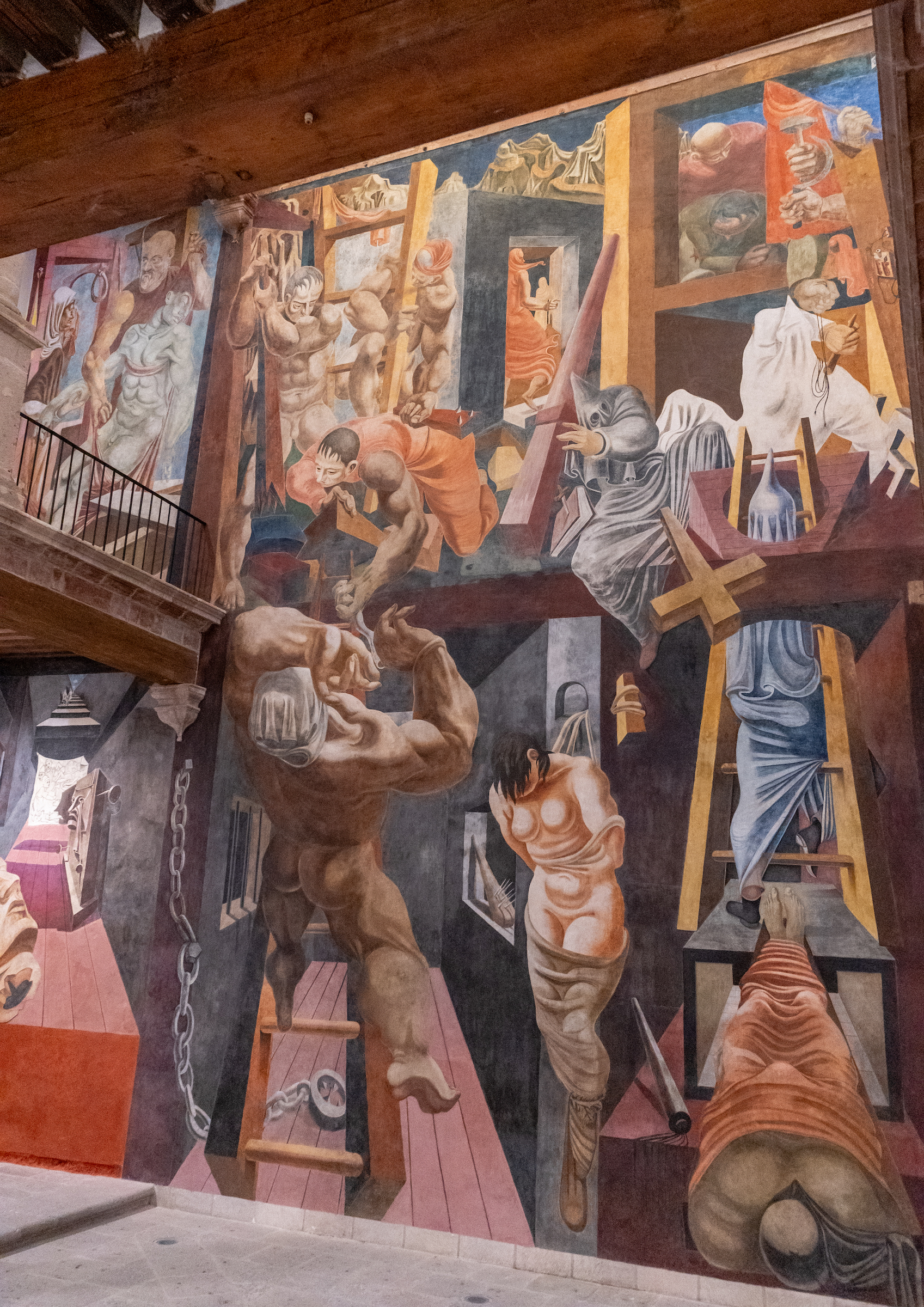A long-neglected fresco by Canadian-American artist Philip Guston has finally been restored to its original splendor. Unveiled at the end of January at the Regional Museum of Michoacán in Mexico, “The Struggle Against Terrorism” (1934–35) traces a history of intolerance and resistance from biblical times to the rise of fascism and the German Nazi party in the early 20th century. But despite the nearly 100 years that have passed since its creation, the monumental mural’s symbolic messages remain timely with the current rise of Neo-Nazism and authoritarianism around the world.
Guston created the 1,000-square-foot work, his first major commission, with fellow painter Reuben Kadish when they were both barely in their 20s. On the invitation of Mexican muralist David Alfaro Siqueiros, the two traveled to an 18th-century Baroque palace in Morelia, Mexico, where they spent six months working on the mural with the assistance of poet Jules Langsner. The result was a massive fresco packed with ominous depictions of violent repression and historical struggle that stretched across a two-story wall and reflected scenes of religious persecution and racial terror that the artists, both children of Jewish immigrants, had witnessed in the United States and abroad with the rise of the Ku Klux Klan and the Holocaust.
Emblematic of Mexico’s Muralism movement of the early 20th century, during which artists like Siqueiros incorporated political messages into artworks that sought to educate and inspire the public, “The Struggle Against Terrorism” was met with backlash from the church, which deemed the mural’s imagery offensive. Within a decade of its unveiling, it was censored and obscured from view by a makeshift wall, resulting in deterioration from years of humidity and neglect. The work was exhumed in 1973 but continued to decline due to unstable conditions.
Now, the mural has been restored through an extensive years-long collaboration between the Guston Foundation and Mexico’s Ministry of Culture and National Center for the Conservation of Artistic and Architectural Heritage. After resolving the building’s humidity issues that had contributed to the work’s deterioration, in September, a four-person conservation team from Mexico’s National Institute of Fine Arts and Literature began the task of physically restoring the mural with the rigatino technique of vertically hatching empty or damaged portions of the work.
“When I first traveled to see the mural in 2006, its former power could only be imagined,” Musa Mayer, Guston’s daughter, said in a statement.”Its message is as relevant today as it was 90 years ago,” she added.



